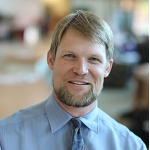Loop Quantum Gravity and Non-Perturbative Approaches to Quantum Cosmology
A special issue of Universe (ISSN 2218-1997).
Deadline for manuscript submissions: closed (28 February 2019) | Viewed by 36820
Special Issue Editors
Interests: noncommutative spectral geometry; string/M-theory cosmology; loop quantum cosmology; group field theory; gravitational waves; cosmic (super)strings
Special Issues, Collections and Topics in MDPI journals
Interests: quantum field theory; quantum gravity; quantum cosmology; traversable wormholes; casimir effect; quantum information theory; quantum thermodynamics; philosophical foundations of quantum mechanics; multiverse concepts, especially those related the sciences and philosophy
Special Issues, Collections and Topics in MDPI journals
Special Issue Information
Dear Colleagues,
Quantum gravity research is experiencing a strong resurgence. Several approaches to unifying general relativity with quantum mechanics are proving fruitful and enlightening. They offer indications of properties of an underlying (or emerging) quantum gravity and cosmological implications. This special edition of Universe is devoted to recent developments in quantum cosmology and quantum gravity, with special focus on loop quantum gravity. All related articles are invited to be submitted for this Special Issue.
Topics of interest for this Special Issue include, but are not limited to:
- quantum geometry, quantum gravity, and cosmological implications
- non-perturbative approach to quantum gravity (e.g., loop quantum gravity, group field theory, spin foam)
- string theory and string cosmology
- modified gravity
- emergent gravity
No Article Processing Charges (APC) will be applied to submitted manuscripts. If the Special Issue reaches more than 10 published papers, it will be printed in book form, with an ISBN number.
Prof. Dr. Mairi Sakellariadou
Prof. Dr. Gerald B. Cleaver
Prof. Dr. Etera Livine
Guest Editors
Manuscript Submission Information
Manuscripts should be submitted online at www.mdpi.com by registering and logging in to this website. Once you are registered, click here to go to the submission form. Manuscripts can be submitted until the deadline. All submissions that pass pre-check are peer-reviewed. Accepted papers will be published continuously in the journal (as soon as accepted) and will be listed together on the special issue website. Research articles, review articles as well as short communications are invited. For planned papers, a title and short abstract (about 100 words) can be sent to the Editorial Office for announcement on this website.
Submitted manuscripts should not have been published previously, nor be under consideration for publication elsewhere (except conference proceedings papers). All manuscripts are thoroughly refereed through a single-blind peer-review process. A guide for authors and other relevant information for submission of manuscripts is available on the Instructions for Authors page. Universe is an international peer-reviewed open access monthly journal published by MDPI.
Please visit the Instructions for Authors page before submitting a manuscript. Submitted papers should be well formatted and use good English. Authors may use MDPI's English editing service prior to publication or during author revisions.







